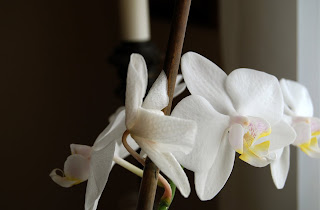For this picture, I wanted to create an antique, worn and dirtied look. To achieve this I looked for textures that would create that effect. I found free textures that were available for use on flickr. I took two textures and opened them up in photoshop. I put both textures on seperate layers on my photo. Then I selected the blend mode that looked the best for each texture. Finally I adjusted the opacity of each texture. I really like the result.
http://www.flickr.com/photos/beapierce/sets/72157601574009156/with/1218705275/
For this picture, I used a Cross-Processing tutorial. First, I added a layer and adjusted the curves. I adjusted the Red, Green and Blue curve. Then I adjusted the blend mode to Color so that the highlights wouldn't be blown out. I added another layer with Solid Color. I chose a yellow-green color and adjusted the opacity of the layer to 5%. For the finishing touch, I found a flim rebate to frame the picture on flickr. I overlayed this on top of the photo. I think the result is very interesting. It's very dramatic, and though I like the look, I proabably wouldn't want to do this for very many photos.
For this picture, I used a watercolor painting tutorial. The first step was to duplicate the background layer three times. Then I added the Cut Out filter to the first layer. I adjusted the blend mode to Luminosity. Then I added the Dry Brush filter to the second later. I adjusted the blend mode to Screen and took the opacity down to 56% so that the details were less blown out. Then I added a Median Blur with a radian value of 12 px to the third layer. Finally, I adjusted the blend mode to Soft Light. I think the end result is very pretty. However, it didn't work as well on my photo because it had much less colors than the landscape photo used in the tutorial.
http://www.photoshopessentials.com/photo-effects/watercolor-painting/page-3.php























